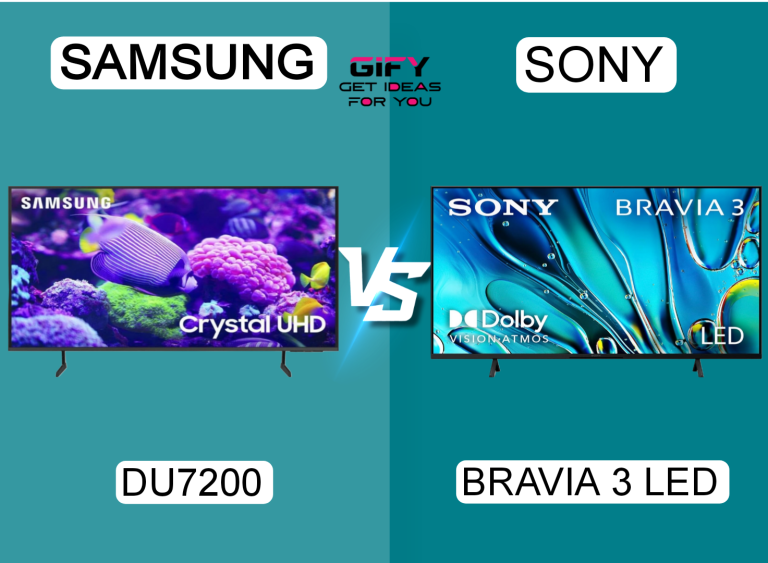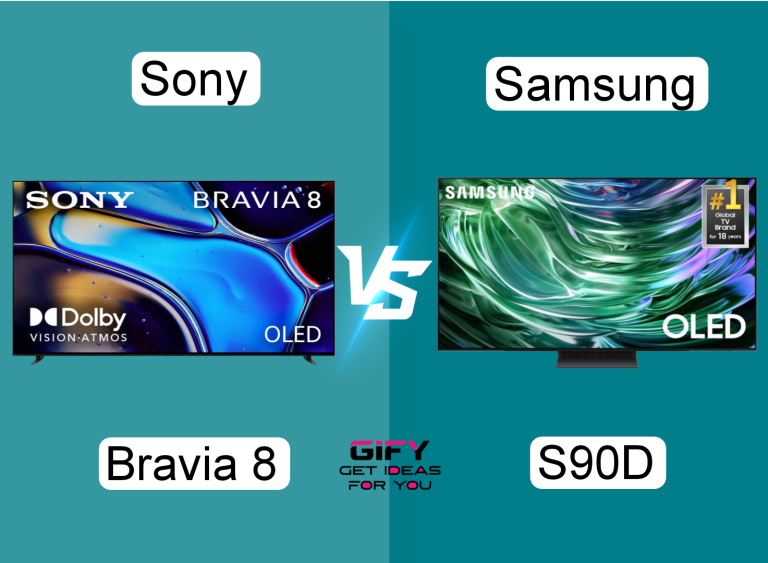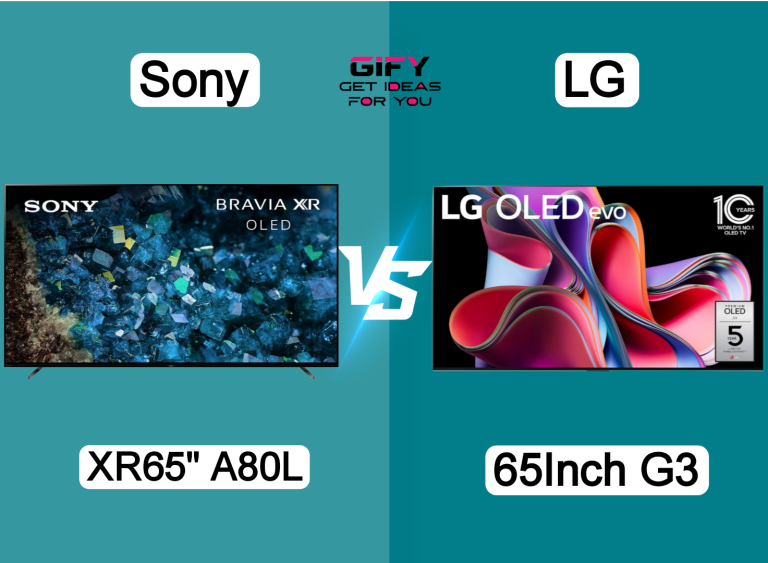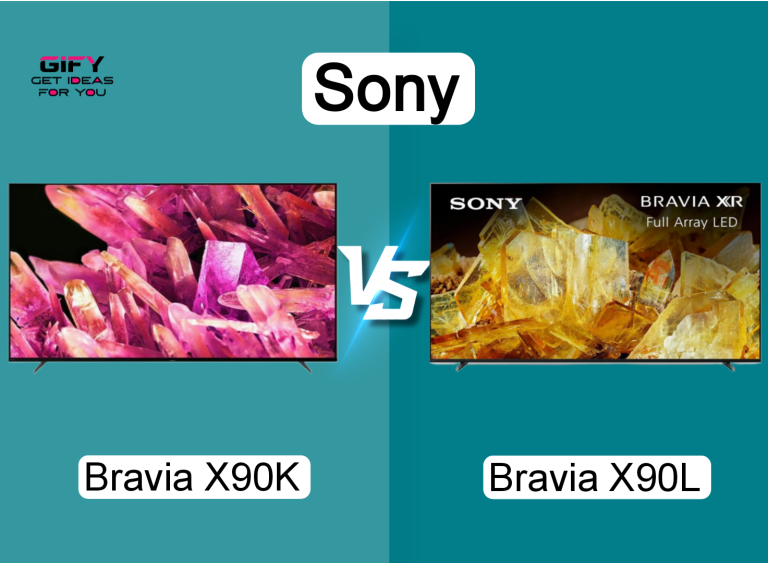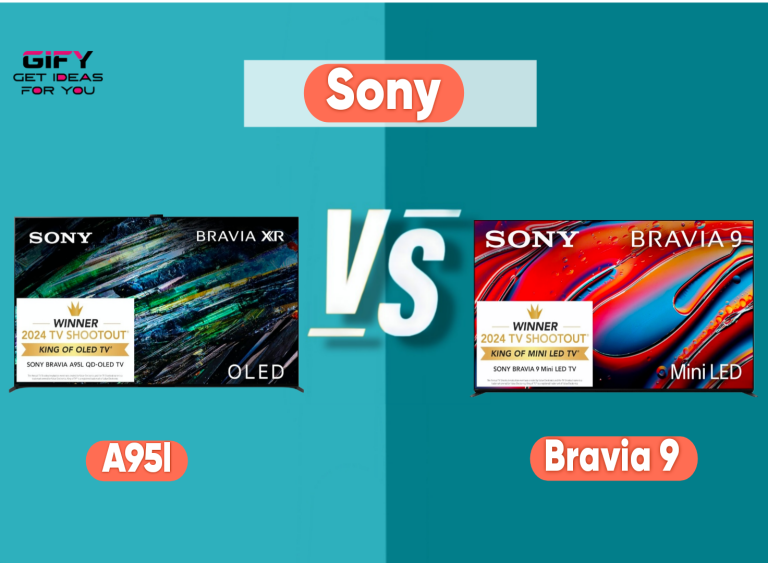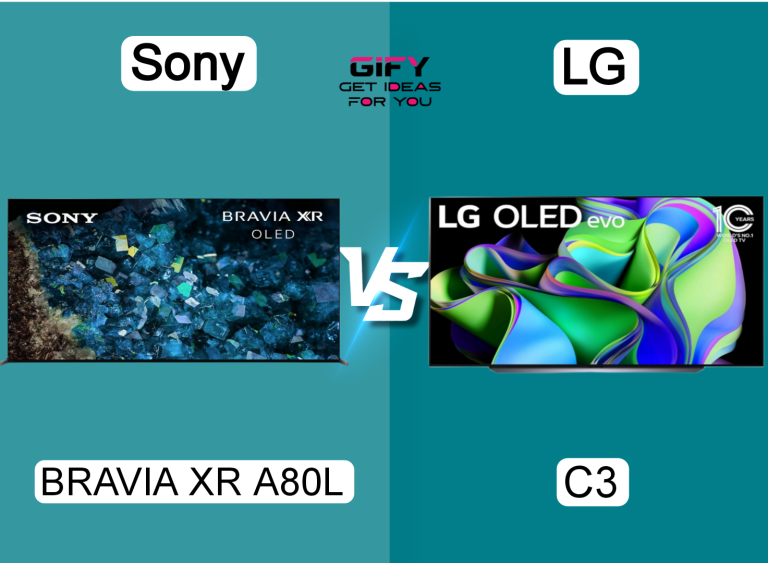Samsung u8000f vs Sony k43s30 : serve buyers who care about picture and smart features. Both suit living rooms, home theaters, and gamers. Each model fits a different need and budget.
Samsung u8000f– Overview
Samsung TV brings bright color and strong 4K upscaling. It uses 3D color mapping for richer shades. Samsung adds Motion Xcelerator for smooth motion up to 60Hz.
The design is slim. Samsung uses a single metal sheet for a clean look. The interface gives many free channels through Samsung TV Plus. Security uses Samsung Knox to protect data and IoT devices.
Pros
- Vivid color and powerful 4K upscaling.
- Large free channel selection (2,700+).
- Elegant metal design and slim bezel.
Cons
- Motion smoothing limited to 60Hz.
- HDR format support not as wide as Sony.
- Sound may need external speakers for full immersion.
Key Features
3D Color Mapping, 4K Upscaling, Motion Xcelerator at 60Hz, Samsung TV Plus, Knox Security.
Sony k43s30 Tv- Overview
Sony TV aims for cinematic color and contrast. The 4K HDR Processor X1 enhances clarity scene by scene. Triluminos Pro delivers many accurate colors.
Sony supports Dolby Vision and Dolby Atmos. The Bravia TV bundle may include movie credits via Sony Pictures Core. Google TV and Google Assistant offer strong voice search and casting options.
Pros
- Excellent color accuracy with Triluminos Pro.
- Dolby Vision and Dolby Atmos support.
- Strong movie experience via Bravia Core.
Cons
- Higher price than similar Samsung models.
- Design slightly thicker bezel than Samsung.
- Some smart features require account sign-in.
Key Features
4K HDR Processor X1, Triluminos Pro, Dolby Vision, Dolby Atmos, Google TV with Assistant, Bravia Core movies.
Feature-by-Feature Comparison
Picture Quality
Samsung TV delivers bright and punchy color. The 3D color mapping boosts mid tones and saturated hues. Upscaling adds detail to lower-resolution sources.
Sony TV targets accuracy. The 4K HDR Processor X1 refines color and contrast in real time. Triluminos Pro gives deeper reds and natural skin tones.
Tip
Choose Samsung for vivid streaming and sports. Choose Sony for movies and color-critical shows.
HDR Support
Samsung TV supports major HDR modes and gives strong peak brightness for highlights. HDR10+ is often part of Samsung’s ecosystem.
Sony TV supports Dolby Vision and shows excellent tone mapping. This makes dark scenes more detailed and cinematic.
Warning
Not all streaming services deliver full Dolby Vision or HDR bitrate. Check service settings and plan level for best results.
Gaming
Samsung TV uses Motion Xcelerator to smooth fast scenes. The panel runs up to 60Hz in many models. Input lag is low enough for casual play.
Sony TV suits fast gaming with higher refresh and lower input lag. It handles consoles well and keeps motion crisp during action sequences.
Tip
For PS5/Xbox Series X, prefer higher refresh and low lag. For casual console play, Samsung is still a solid pick.
Smart TV Platform
Samsung TV gives many free channels via Samsung TV Plus. The interface is simple and curated for quick access to live content.
Sony TV runs Google TV. The voice assistant and casting features integrate well with Android phones and Google services.
Warning
Some apps and features require sign-in or subscriptions. Expect updates and occasional reboots after major updates.
Design
Samsung TV uses a single metal sheet and a slim bezel. The look fits modern living rooms. The thin profile reduces distractions.
Sony TV also looks premium. The bezel sits slightly thicker, but the build feels sturdy. Sony focuses more on audio integration in some models.
Tip
Measure the stand width and wall mount VESA before buying. Some stands need wide TV stands or dedicated mounts.
Samsung u8000f Tv— Detailed Review
We tested the Samsung TV for several weeks across shows, movies, and games.
We noticed color pop on streaming services. The 3D color mapping gives vivid mid tones. Upscaling made older shows look clearer on the 4K panel.
Motion Xcelerator did a good job with sports. Fast players and ball movement stayed readable at 60Hz. Bright stadium highlights looked crisp.
We tested the smart platform. Samsung TV Plus offered many live channels. That reduced time spent opening separate apps for news and sports.
Audio was adequate for casual viewing. We paired the TV with a soundbar for movies. The Knox features added a visible security layer for smart home devices.
We liked
- Bright, punchy color and clear upscaling.
- Huge free content library on Samsung TV Plus.
Cautions
- 60Hz limits high-frame competitive gaming.
- Built-in speakers fall short for cinema-level sound.
Quick Advice
Pair this TV with a mid-range soundbar. Use game mode to reduce input lag. Turn off aggressive motion smoothing for films.
Sony k43s30 Tv— Detailed Review
We used the Sony TV across movies, high-bitrate streams, and gaming sessions.
The Triluminos Pro color set impressed. Skin tones looked natural. Vivid scenes kept fine gradation without harsh clipping.
We played high-bitrate titles from Bravia Core. The extra credits made it easy to test studio-grade files. Dolby Vision plus the X1 processor gave deep blacks and rich highlights.
Sound from built-in drivers felt more refined than generic TV speakers. Dolby Atmos enhanced immersion when the content supported it.
We liked
- Cinematic color and dynamic range with Dolby Vision.
- Smooth voice control and casting via Google TV.
Cautions
- Price sits above comparable Samsung models.
- Some advanced features need apps and sign-ins.
Quick Advice
Enable Dolby Vision where available. Use the improved sound modes for movies. Keep the TV updated for best streaming compatibility.
AirPods Pro 2 vs Sony WF 1000XM5: The Ultimate Battle of Premium Earbuds.
FAQs : Samsung u8000f vs Sony k43s30
Q1: Which TV is best for movies?
Answer: Sony TV. It supports Dolby Vision and the X1 processor refines scenes. This gives a more cinematic picture for films.
Q2: Is Samsung better for sports?
Answer: Samsung TV has bright highlights and Motion Xcelerator tuned for live sports. This helps with clarity and fast action at 60Hz.
Q3: Which is better for console gaming?
Answer: Sony TV is stronger for high-frame gaming. It offers higher refresh and lower input lag for competitive titles.
Q4: Do I need a soundbar with either TV?
Answer: For full cinema sound, yes. Both TVs benefit from a soundbar for deep bass and clearer dialogue.
Q5: Which TV offers more free content?
Answer: Samsung TV. It delivers 2,700+ free channels via Samsung TV Plus and other free apps right away.
Final Verdict
Sony TV wins for color accuracy and cinematic features. It offers Dolby Vision, Dolby Atmos, and the X1 processor. This matters for movie lovers and those who value studio-grade playback.
Samsung TV wins for value and broad free content. It offers vivid color, excellent upscaling, and a slim metal design. This suits buyers who stream varied content and watch live TV and sports.
For most buyers who want movie-level color and the best HDR experience, choose Sony TV. For buyers who want a bright image, lots of free channels, and a strong price-to-feature ratio, choose Samsung TV.
Need a quick consult?
Check both product pages and compare current prices before you buy. Test each TV in-store if you can. That helps confirm how each picture looks to your eyes.




